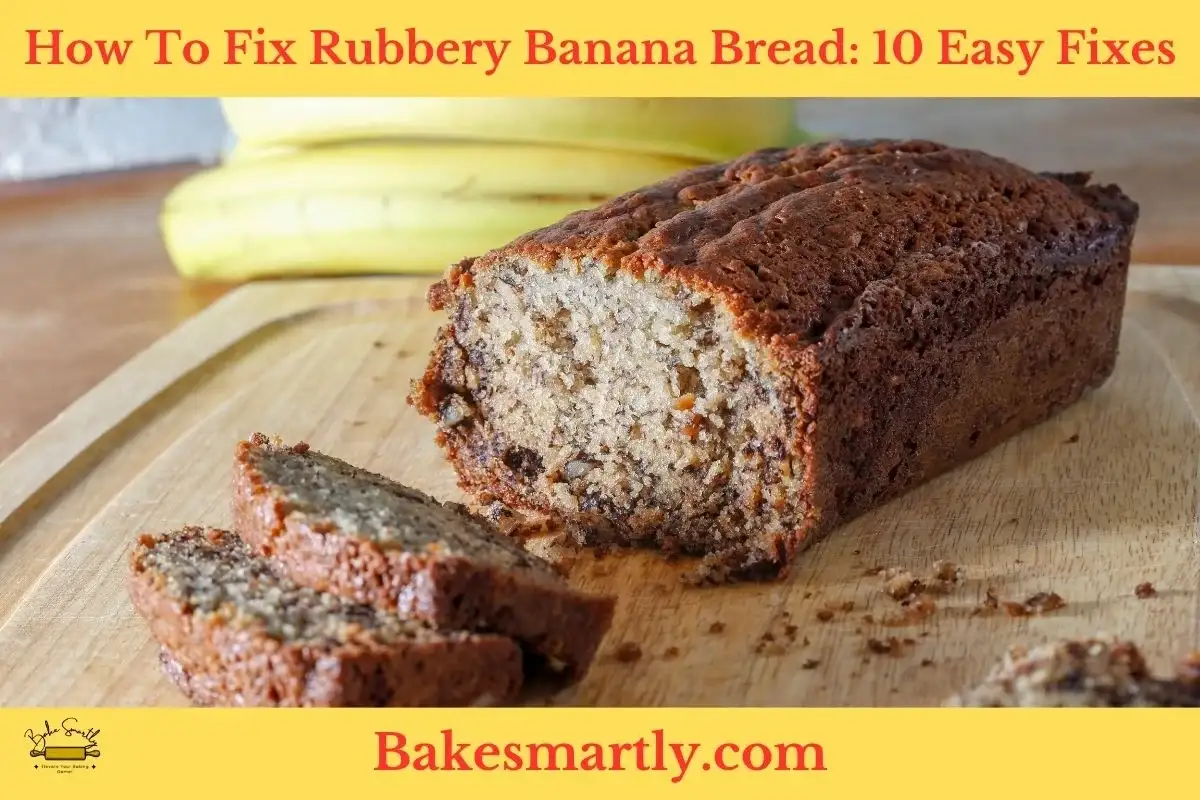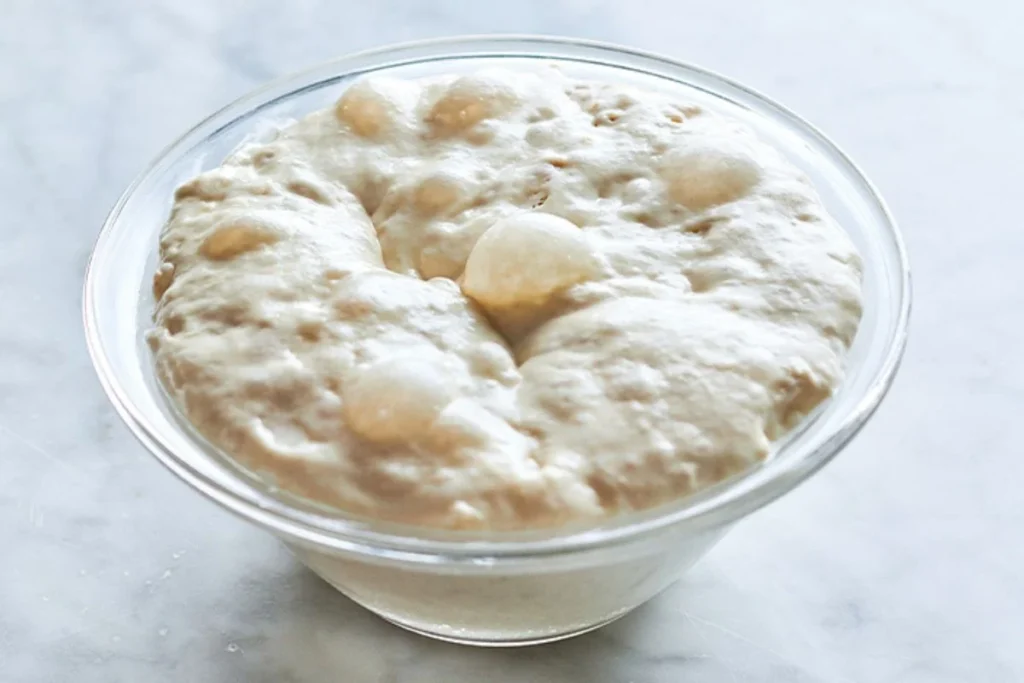
How To Fix Rubbery Banana Bread |10 Easy Fixes
Tired of ending up with banana bread that’s all dry and rubbery every time you try baking it? Don’t sweat it; we’ve got your back! Our super simple tips can help you turn that banana bread into a moist and delicious treat that’ll have everyone begging for more.
Well, with a little bit of knowledge and some handy tricks, you can make your banana bread turn out just right every time. In this article, we’re going to share our top 10 tips for transforming your banana bread from rubbery to incredibly moist.
Whether you’re a seasoned baker or just starting in the kitchen, these tips will take your banana bread game to the next level.
So, let’s get ready to banish rubbery banana bread from your life forever. We’ll dive into our foolproof tips and create the most moist and delicious banana bread you’ve ever had!
Table of Contents
ToggleWhy Does Banana Bread Get Rubbery?
Rubbery banana bread can be a disappointing result for any baker. To understand how to fix this problem, it’s essential to know what causes it in the first place.
Several factors can contribute to the rubbery texture of banana bread:
OverMixing
One of the most common reasons for rubbery banana bread is overmixing the batter. When you overmix, you’re allowing the gluten in the flour to develop too much. Excessive gluten formation leads to a tougher, chewier texture.
To avoid this, it’s important to mix your ingredients only until they are combined, with a few lumps remaining. This gentle approach will result in a softer, more tender loaf.
OverBaking
Baking banana bread for too long can also lead to a rubbery texture. The ideal banana bread should be moist and slightly springy to the touch. If you bake it past this point, it can become dry and rubbery.
To prevent overbaking, monitor your bread closely during the final minutes and use a toothpick to check for doneness. If the toothpick comes out clean or with a few crumbs, it’s ready to be removed from the oven.
Incorrect Ingredients
The quality of your ingredients matters. Using underripe or overripe bananas, outdated flour, or expired baking soda and powder can result in an undesirable texture.
Ripe bananas with brown spots contribute to soft and moist banana bread, while fresh, quality ingredients are essential for achieving the desired texture.
Too Much Flour
Using an excessive amount of flour can make your banana bread dense and rubbery. Be sure to measure your ingredients accurately, and avoid packing the flour when measuring it. A kitchen scale can be a helpful tool to ensure precision.
Lack of Moisture
Moisture is key to achieving a soft texture in banana bread. If your recipe lacks sufficient moisture, your bread can turn rubbery. Adding ingredients like sour cream or applesauce can help increase moisture content and improve the texture of your banana bread.

How to Fix Rubbery Banana Bread |10 Simple Solutions
Banana bread is a classic favorite, but we’ve all had moments when our promising loaf turns rubbery. Thankfully, rubbery banana bread doesn’t mean you’ve failed as a baker.
With some know-how and a dash of creativity, you can turn that chewy loaf into a delicious masterpiece. In this section, we’ll explore ten easy ways to fix rubbery banana bread and leave you craving more.
- Check Your Ingredients: The foundation of great banana bread is the quality of your ingredients. To ensure soft, moist bread, start with ripe bananas with brown spots. They’re not only sweeter but also make the bread moister. Use fresh, high-quality flour, baking powder, and baking soda, as fresh ingredients make a big difference.
- Mix It Right: A common mistake that leads to rubbery banana bread is overmixing the batter. Overmixing causes too much gluten development in the flour, resulting in a tough and rubbery texture. To avoid this, gently mix the ingredients until just combined. It’s fine if a few lumps remain; this keeps your banana bread soft and tender.
- Adjust Baking Time: Banana bread can go rubbery if you overbake it. To prevent this, watch it closely during the last minutes of baking. Start by reducing the recommended baking time slightly, then check for doneness. Stick a toothpick into the center of the bread. If it comes out clean or with a few crumbs, it’s ready. Slightly underbaking will give you a softer, moister texture.
- Add Sour Cream: When your banana bread is too rubbery, try adding some sour cream. Sour cream can add moisture and improve the texture. Just fold a dollop of sour cream into the banana bread batter before baking, and you’ll be amazed at how it transforms your loaf.
- Use Applesauce: Another solution for rubbery banana bread is replacing some of the fat in the recipe with unsweetened applesauce. Applesauce adds moisture while keeping the flavor intact. It’s a healthier option and works well if you want to reduce the fat content. Typically, you can replace half the fat with applesauce for the best results.
- Banana Bag Trick: If your banana bread has already gone rubbery, consider the banana bag trick. Put your rubbery banana bread in a sealed plastic bag and leave it overnight. The moisture from the bananas will work its magic and soften the texture. It’s a simple remedy that can revive your banana bread.
- Slice and Toast: Sometimes, the rubbery texture is only on the surface. If that’s the case, don’t worry. You can fix it by slicing your bread and toasting the slices. Cut your banana bread into slices, then toast them in a toaster or oven until they’re slightly browned. You’ll get an improved texture and a delightful crunch.
- Warm It Up: If your banana bread has gone rubbery, a quick fix is to warm it up. Preheat your oven to 350°F and place your banana bread inside for 5-10 minutes. Cover it with aluminum foil to avoid further drying. Warming your banana bread will help restore its moisture and softness, making it more enjoyable to eat.
- Add a Banana Topping: Enhance the flavor and moisture of your banana bread by adding a banana topping. Mash a ripe banana and mix it with some powdered sugar to create a delectable glaze. Drizzle it over your banana bread before serving. Not only will it improve the texture, but it’ll also give your banana bread a burst of banana flavor.
- Moisture-Retaining Storage: Prevention is always better than cure. To keep your banana bread from going rubbery in the first place, focus on proper storage. After your banana bread has cooled completely, store it in an airtight container. To maintain moisture, place a slice of bread in the container alongside your banana bread. The bread will help keep the right level of humidity, ensuring your banana bread stays fresh and moist.
Common Issues with Banana Bread Texture
When it comes to making banana bread, getting the texture just right can be a bit tricky. Here are some common problems you might run into and how to fix them:
- Rubbery Texture: As we mentioned earlier, rubbery banana bread is a common issue, and it’s usually because the batter was overmixed. To fix this, be gentle when mixing your ingredients, and don’t overwork the dough.
- Dryness: Dry banana bread can happen if it’s overbaked or if you didn’t use enough wet ingredients. Adjust your baking time, or try adding things like sour cream or applesauce to add moisture.
- Gummy Inside: If the inside of your banana bread is gummy, it probably didn’t bake all the way through. Use a toothpick to check for doneness, or lower your oven temperature to prevent overbaking the outside.
- Inconsistent Texture: Inconsistent textures can occur when the ingredients aren’t mixed evenly. Pay attention to your mixing technique and make sure everything is distributed evenly.
- Crumbly Texture: If your banana bread is crumbly, it might have too much flour or not enough moisture. Double-check your measurements and think about using less flour or more wet ingredients.
Understanding these common issues and their solutions will help you troubleshoot your banana bread and get that delightful, moist, and soft texture you’re aiming for.
How to Fix Rubbery Banana Bread | Final Thoughts
In the end, getting rid of rubbery banana bread is simpler than you might think. By following our foolproof tips, you can turn your banana bread into a moist and delicious treat that’ll have everyone craving for more.
Whether it’s picking the right bananas, using the best ingredients, or adjusting the baking time and temperature, you now know to master the art of baking perfect, moist banana bread.
Remember the common problems and solutions for banana bread texture, and understand why banana bread can go rubbery. With these insights, you can troubleshoot and become a pro at baking perfect, moist banana bread.
So, get ready to enjoy the most mouthwatering and irresistible banana bread you’ve ever tasted!
Lindsey Mackenzie
About me
Hi there! I’m Lindsey Mackenzie, the founder of Bake Smartly. Baking has been my passion since childhood, growing up in my father’s bakery. With Bake Smartly, I’m excited to share my love for all things sweet and savory. Join me on this delicious journey as we whip up scrumptious treats and sprinkle joy into every bite!






